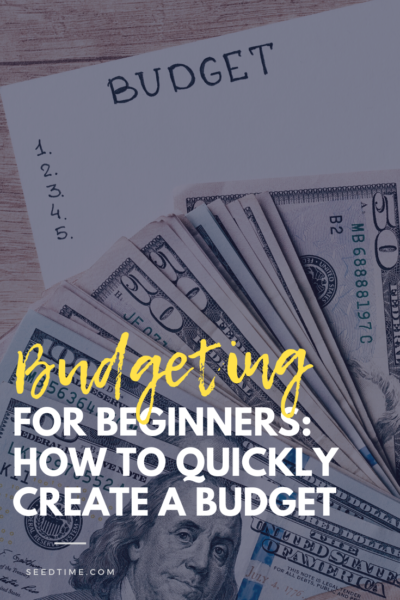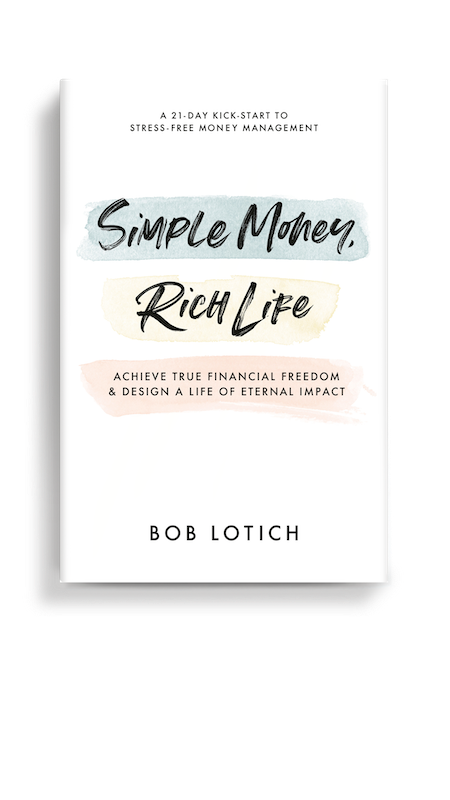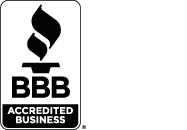(The following is a transcription from a video Linda and I recorded. Please excuse any typos or errors.)

So you decided you want to start a budget, but you don’t know where to start. Well, if you are new to budgeting we’re going to show you exactly how to do that, how you can get started.
And we’re even going to provide you with a free budgeting worksheet that is going to help you get up and running.
We are really excited that you decided to start a budget. I mean, this is going to change your life in so many ways and we really want to just help you make it so that it works for you. We have a lot of really good ideas, so that your budget actually is enjoyable and not a strain.
Anybody who’s been around SeedTime for a while, knows that we talk about budgeting a lot, because it has been such an impactful thing for us. It’s affected our lives in so many positive ways.
It allowed us to pay off all of our debt, including our mortgage. It was a big part of that. And not to mention, us reaching a lot of other financial goals. So it’s just been a really important part.
And that’s helped us get on the same page, which I think is just really huge. So much more peace in our marriage. Yeah, it’s just been really good.
Linda and I recorded a video (also called Budgeting for beginners) that you can watch our discussion with the fellow SeedTime community on Youtube, feel free to join them if you’d rather watch the video:
How Much Money Are You Actually Bringing In?
In order to start building your budget, you need to know a couple of things. You need to know how much money you’re actually bringing in. Surprisingly, not everybody knows this. Now, you know your salary. I know I get paid whatever, $20,000, $40,000 a year at my job or whatever that is, but you need to know what your actual take home pay is. And so you need to find that out.
I’m talking about what we’re bringing in after taxes are taken out. Because that’s the money that we actually have, that we can spend on stuff. So that’s the first step is figuring that out.
How Much Are You Spending Each Month?
After we get that sorted out, which should be pretty easy, just go look at your paycheck and figure out what your net take home pay is. Next, we need to talk about your expenses and we need to figure out how much you’re spending each month on everything you’re spending. This would be your rent or mortgage, your cell phone bills, Groceries. All fixed expenses and all variable expenses.
Go Back Through Your Bank Statements
So there’s a couple of ways you can do this. You can go back through your bank statements and just look at all of your expenses for the previous month, and just see where you’re spending your money and how it’s broken down.
Use A Free Tool…
Or you can use a free tool like Mint or Personal Capital, either of them. Once you get all signed up and connected with them, they’ll be able to show you exactly how much you spent for the last month or the last couple months and see where you’ve been actually spending your money.
Our Free Budgeting Worksheet
And at this point, after you have that information, go ahead and download our free worksheet. We have a free budgeting worksheet, and you can plug all that information in there and you can see how your income stacked up against your expenses.
You will be able to see what adjustments need to be made in order to get your budget to balance out. And this is going to be an invaluable tool for you as you’re getting started. And if you don’t want to use the worksheet, you could always do this with just an old fashioned pencil and paper as well.
Once you get everything plugged into the spreadsheet and you can see how your budget is laid out and how much you have budget for each category.
3 Methods For Maintaining Your Budget
At this point, we need to pick a method for actually maintaining the budget. And for this, you basically have three different options and we’re going to go through the pros and cons of each.
1. Cash Envelopes
The first one, which we all know and we’ve all heard about is the cash envelopes. This is what my parents did and probably my grandparents, my great grandparents also.
So this is putting the cash in the envelopes for the groceries or for the household goods or whatever, and you just spend it out of that. And once the cash is gone, it’s gone. You have to pull from another envelope if you want to spend more money on groceries or whatever else.
The big benefit, the pro of this system is that there’s accountability. There’s no cheating it because you’re dealing with real money and you can’t fudge it, you can’t fake it. It’s either there or it’s not.
But the downside of this is you have to exclusively use cash. Now this can be a little bit of a problem sometimes when you just want to use your credit card, or if you’re buying something online, it’s difficult to use cash for that type of system. So that’s your first option of how you can maintain your budget.
2. Budgeting Software Or Budgeting App
The second option is some type of budgeting software or budgeting app. Now there are tons of them out there these days. There’s a whole bunch, I’ve tried a whole bunch of them. A lot of them have a ton of great bells and whistles and perks and features. And you can spend a lot of money on them.
The pro here that a lot of them have is you can use a debit card or a credit card and actually have transactions imported to it. So that’s really nice that you’re not dealing with the cash stuff and having to write everything down.
Now the downside is unlike the cash envelope system is that most of these systems, in fact, every single one I’ve tried, doesn’t offer any real accountability because you’re dealing with numbers on a screen and it’s not your real money. So even though it’s importing transactions, you can fudge it and you can fake it.
And what I’ve noticed, what I’ve observed with most of the readers I’ve talked to is that people tend to do that. And so you overspend in a category and you’re just like, “Well, I’ll let it slide to the next month and I’ll fix it next month.” We did that too many to count.
The other problem for me was that it just got too complicated. Linda was okay with it for a while, but once it started to get to the point where we were over in our budget and there was no way for me to fix it, she was like, “This is your mess now. And I’m over it. You’re going to have to fix it, and then tell me what to do because it just got way too complicated for me.”
3. Our Real Money Method For Budgeting
So while budgeting software can work for some people, I’ve seen people who’ve made it work, there’s a lot of people who can’t and who don’t. And so ultimately, that led us to the third option, which we use now, which we call the Real Money Method. And it’s a combination of the two. So it’s the accountability of the cash envelope system, but it’s also the convenience of being able to use a debit or a credit card. We love that combination.
Plus it’s simple. And a lot of our students who have gone through our course has said that it’s not only simple but so helpful. Particularly, the ones who have struggled with budgeting software have enjoyed it.
It’s a very simple method. Basically, you’re using your bank account to budget. So instead of using cash envelopes, you’re actually using your bank account. And Linda said that “if it’s easy enough for me, I’m telling you, it’s easy enough for you.”
So the pros of this method are that it’s quick, it’s easy, and it has the accountability.
Now the con, the only downside here is that you need to be able to open a bank account. So if you aren’t able to open a checking account, you’re not going to use this at this point.
But if you can, and if you struggled with budgeting software or the cash envelope system in the past, this is something you might want to check out.
We also encourage you to check out this recent video we did on how to stick with your budget:
If you have any questions for us, hit us up down in the comments, we’ll do our best to get back to you!




